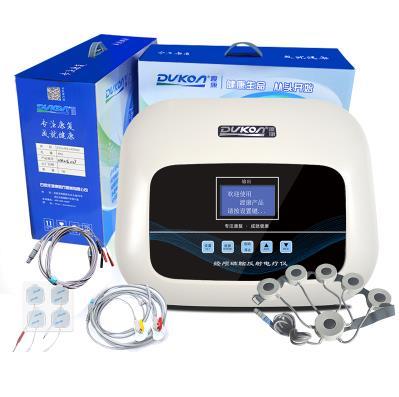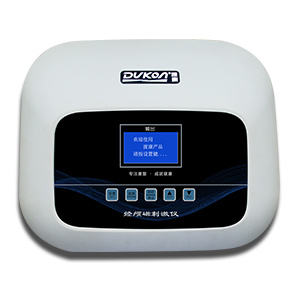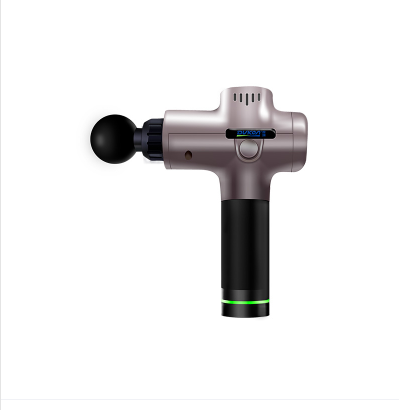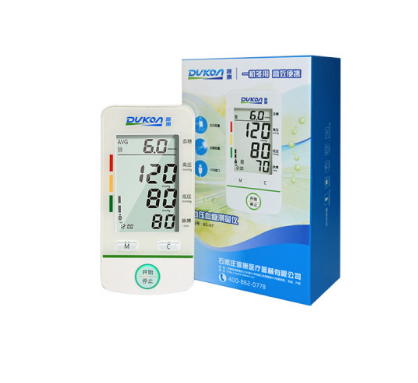Contact Us
ADDRESS:
4th Floor, Runjiang Headquarters International Building, No. 455, Yuhua East Road, Hi-tech Industrial Development Zone, Shijiazhuang, Hebei, China.
TEL:
PHONE:
E-MAIL:
Transcranial Magnetic Stimulator
specializes in the manufacture of flanges, butt weld pipe fittings in standard as well as special parts and forgings according to customer drawings.
- Commodity name: Transcranial Magnetic Stimulator
- Product description
-
Transcranial Magnetic Stimulator NK-IA02C
The transcranial magnetic stimulator (trade name: brain reflex therapeutic apparatus) is developed by our company's researchers and experts in related fields in combination with market-related products, through years of research, using biological information simulation technology and computer software technology. Through the cooperative application of (rTMS) repetitive transcranial magnetic stimulation or repetitive transcranial magnetic stimulation (rTMS) and simulated biological electrical stimulation of cerebellar fastigial nucleus, magnetic and electrical stimulation are applied to the brain, expand cerebral blood vessels, improve microcirculation, improve blood flow in the brain, protect nerve cells, promote the recovery of nerve function, and guide the normalization and order of EEG and brain magnetic activity. Transcranial magnetic stimulator overcomes the difficulty of traditional physical therapy factors to penetrate the skull barrier, which is a revolutionary breakthrough in brain physical therapy.
Features and benefits:
Features of Transcranial Magnetic Stimulation (TMS):Transcranial magnetic stimulation, English (Transcranial Magnetic stimulation) abbreviation TMS. It is a kind of beneficial pulse electromagnetic field and alternating electromagnetic field, which acts on the central nervous system of the brain. It uses the induced current generated by electromagnetic field to change the membrane potential of cerebral cortex nerve cells, affect the metabolism and nerve potential activity in the brain, and cause a series of physiological functions. reaction.
Advantages of Repetitive rTMS Transcranial Magnetic Stimulation:
The principle of repetitive transcranial magnetic stimulation (rTMS) is the same as that of single-pulse transcranial magnetic stimulation (TMS). The difference is that repetitive transcranial magnetic stimulation can also stimulate neurons in the refractory period, so it can excite more neurons in the horizontal direction, not only causing biological effects, affecting the local and functionally related distant cortex functions of stimulation, and realizing regional reconstruction of cortex functions. The biological effects produced can last for a period of time after the stimulation, it has become a good tool to study the functional reconstruction of neural networks.
rTMS transcranial magnetic stimulation overcomes the defects that current cannot enter the brain:
The skull is a non-conducting organism. Using the traditional electrical stimulation method, the current cannot enter the intracranial, and the current cannot stimulate the brain. However, electromagnetism has the characteristics of being basically consistent with the permeability of biological tissues. Magnetic lines of force can easily penetrate the skull to reach the deeper tissues in the brain without trauma. Electromagnetism directly acts on brain cells to generate induced currents. Under the condition of appropriately increasing the current, the electric field can effectively change the membrane potential of cells themselves, promote the changes of cell axons, and improve brain neurons and related functions through repeated rTMS stimulation. This way of adjusting neurons by improving the cell membrane potential is impossible to achieve by traditional electrical stimulation and other physical methods.
History of Transcranial Magnetic (TMS/rTMS) Stimulation:
In 1985, Barker developed the first transcranial magnetic field stimulator and began stimulating the motor cortex of the human brain with continuous magnetic field lines, which was the beginning of modern transcranial magnetic stimulation (TMS). Since 1986, reports on magnetic stimulation have increased year by year. In 1992, American companies introduced the first repetitive magnetic stimulator (rTMS). By the beginning of this century, transcranial magnetic stimulation had been widely used in various neurological fields. In 2010, Shijiazhuang Dukang Medical Equipment Co., Ltd. perfectly combined transcranial magnetic stimulation with simulated bioelectrical stimulation of cerebellar fastigial nucleus to develop a new generation of transcranial magnetic stimulator, which provided convenience for clinical application and research in medical institutions at all levels.
Transcranial magnetic stimulator applications:
Cognitive discipline-used to improve learning ability, memory, language ability.
Psychiatry-for the improvement of specific brain functions affecting the dorsolateral cortex of the prefrontal lobe.
Neurology-Pathways for Stimulation of Central and Peripheral Nerves
Rehabilitation medicine-used to promote the recovery of brain function and motor function.
Pediatric brain injury-used to promote the regeneration of nerve cells in pediatric brain injury and the development of nerve cells in brain tissue.
The principle of the product:
Repetitive Transcranial Magnetic Stimulation (rTMS)-Treatment Cap:Based on brain physiology, magnetic biology, biophysics and clinical encephalopathy therapeutics, transcranial magnetic stimulation (alternating electromagnetic field of negative polarity) is output by a specially designed therapeutic generator. The physiological effects of transcranial magnetic stimulation on brain tissue are mainly manifested in the following aspects:
1. Increase cerebral vascular elasticity
2. Improve blood circulation in the lesion area
3. Improve the metabolic environment of brain tissue
4. Guide the patient's brain magnetic function to normalize and order.Frequency conversion vibration massage function-treatment cap:
1. Activate brain cells, relieve fatigue, reduce stress and improve sleep quality.
2. Improve mental clarity and responsiveness.
(II) simulation of biological electrical stimulation of cerebellar fastigial nucleus-postauricular electrical stimulation
Simulation of bioelectricity (disordered wave) through the mastoid point extracranial stimulation of the cerebellar fitroid nucleus, brain cells and cerebral blood vessels, through the following three aspects of the role, in order to play a brain function
Effect of recovery:
1, diastolic cerebral blood vessels, improve vascular elasticity, increase cerebral local blood flow, improve cerebral blood microcirculation.
2. Start the brain endogenous neuroprotective mechanism, protect nerve cells, improve the metabolic environment of brain cells, and accelerate the metabolism of damaged brain cells.
3. Stabilize the brain cell membrane potential, inhibit the depolarization wave, and guide the abnormal EEG to normal.ExcellencePursuit of perfection
Set many advantages in one, only to give customers intimate perfect video experience, let customers more at ease more at ease
Indications (reference conditions) are as follows:
Ischemic cerebrovascular disease: cerebral thrombosis, lacunar infarction, vascular dementia, cerebral insufficiency, cerebral arteriosclerosis, epilepsy
Mental system related diseases: migraine, neurasthenia, insomnia, cognitive dysfunction, Alzheimer's disease, brain atrophy, depression, brain fatigue syndrome
Child development-related disorders: motor, posture, intelligence, language, visual perception, growth and development, dental development, emotional and behavioral disorders
Craniocerebral injury related diseases: concussion, brain contusion and brain trauma sequelae, cerebral hemorrhage recovery period, cerebral hypoxic damage, brain toxic damage
Key words:
Get A Quote
Note: Please leave your email address, our professionals will contact you as soon as possible!










